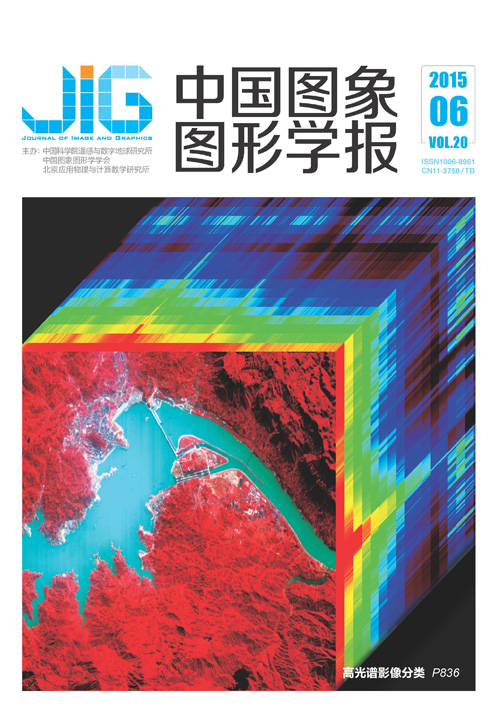
基于Arnold映射的分块双层自适应扩散图像加密算法
摘 要
目的 针对图像安全保障问题,提出一种基于Arnold映射的分块双层自适应扩散数字图像加密(BDAM)算法,提高图像加密效率及安全性.方法 首先利用Logistic映射、Tent映射和Sine映射,进行两两组合构建3种新1维混沌映射,提取初始混沌序列;然后定义一个与明文图像矩阵大小相同的初始加密图像矩阵,对其进行分块,预处理Arnold映射参数,正反向联合映射将明文图像矩阵中随机位置像素值,存入初始加密矩阵随机块中的随机位置,并同时进行块内像素、块间自适应扩散,直至填满初始加密矩阵,完成加密.结果 针对多种类型灰度图像,通过仿真实验与性能对比分析表明: BDAM算法在信息熵、密钥空间、相关性、敏感性等方面均优于其他加密算法,置乱效果好,对密钥及明文的敏感性高,可取得较好加密效果.结论 结合随机置乱的分块双层非线性自适应扩散BDAM算法可有效抵御多种攻击,安全性较高,适用于各种类型灰度图像加密,具有潜在应用价值.
关键词
Encryption algorithm of image blocking and double adaptive diffusion with Arnold mapping
Xu Ya, Zhang Shaowu(Key Laboratory of Information Fusion Technology of Ministry of Education College of Automation, Northwest Polytechnical University, Xi'an 710072, China) Abstract
Objective With the rapid development and popularization of computer networks and information storage technologies, networks have become a mainstream tool for information transmission. This medium is used to transmit information, including text messages, audio, images, and other multimedia files. Thus, networks intuitively play an irreplaceable media-related role in the transmission of information flow security as the main carrier of network information. The security problem in the network transmission of image data must be solved effectively; therefore, an encryption algorithm of image blocking and double adaptive diffusion using Arnold maps (BDAM) was proposed in this paper to address image security issues. This algorithm can improve the efficiency and security of image encryption.Method BDAM first uses Logistic, Tent, and Sine maps to build three types of novel 1D chaotic maps according to the scheme of pairwise combination. This algorithm then extracts the initial chaotic sequence. Then, BDAM defines an initial encryption image matrix that is similar in size to the plain image matrix. The latter is divided into small blocks. The initial encryption image matrix pretreats the parameters of the Arnold map. The pixels in the random position of the plain image matrix are deposited at random positions within the random block of the initial encryption image matrix when ordinary and reverse maps are joined. At the same time, adaptive diffusion occurs among intra-block pixels and inter-blocks until the initial encryption matrix is filled. Result Scrambling and diffusion synchronization are initiated by combining forward and reverse Arnold mapping processes. The BDAM algorithm can equalize the access sequence of each pixel and the position of each storage sequence, enhance scrambling randomness, and overcome the drawbacks of conventional Arnold mapping from rules to the defects of random access. In addition, this algorithm can apply block and double adaptive diffusion in the scrambling process. The interactions among the ciphertext pixels and ciphertext pixels, plaintext pixels, and chaos random sequence spread the influence of each pixel to the image matrix of the entire site nonlinearly. Furthermore, these interactions continuously disturb chaotic systems during diffusion, initiate adaptive diffusion, and enhance the sensitivity of the encryption key, the ciphertext, and plaintext. The results of simulation and of performance comparison analysis show that the BDAM algorithm is superior to other encryption algorithms for many types of gray images in terms of information entropy, key space, correlation, and sensitivity, among other aspects. Scrambling randomness is favorable as well. Moreover, the algorithm displayed high sensitivity to the key and to the plaintext, thus improving encryption results. Conclusion Random scrambling that is combined with blocking and double nonlinear adaptive diffusion through the BDAM algorithm can resist various attacks effectively and exhibit high security. Therefore, this method is suitable for all types of gray-scale images and may be applied in this field.
Keywords
|



 中国图象图形学报 │ 京ICP备05080539号-4 │ 本系统由
中国图象图形学报 │ 京ICP备05080539号-4 │ 本系统由